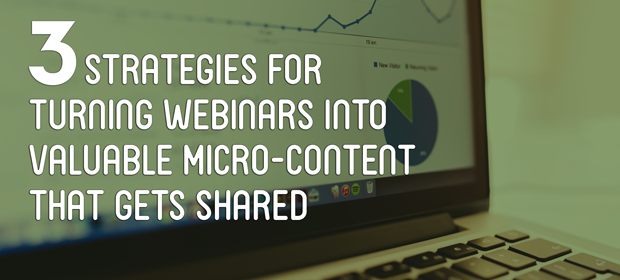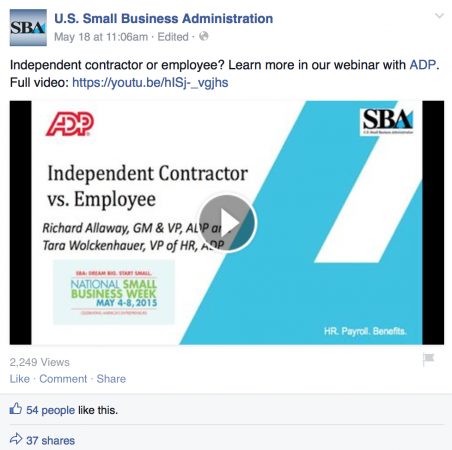Webinars take a long time to create. Most marketers don’t get enough mileage out of their webinars and other long-form content such as ebooks and whitepapers. Once you’ve sunk a lot of time and energy into creating content, you want users to actually read it. Without a high level of brand awareness and trust, most people aren’t going to sit through an hour long webinar or even read the 10-20 page synopsis of it. The customers who are ready for this type of content will be glad that it’s there. You can reach the remaining customer base by turning webinars into micro-content.
Repurposing content allows you to reuse it in new ways, extending its value. Instead of spending hours crafting a single webinar that people may or may not watch, you’re creating content that you’ll be able to spin in dozens of different ways, reaching a much larger audience. As you use the following strategies for turning webinars into micro-content, keep these principles in mind.
- How can you make micro-content valuable? Most likely there are specific segments of a given webinar that will be more valuable as standalone content. For example, if you include a slide with marketing resources for start-up companies, create a reference guide on your website or blog with these resources.
- How can you make micro-content shareable? Focus on the visual components of your webinars that will make great standalone assets. For example, if you create a killer infographic that details the benefits of drinking water, people are likely to share it on Facebook and Pinterest. They are less likely to share the same information in text form.
- How can you make micro-content consumable? Not every user likes to consume online content in the same way. Some people would prefer to watch short webinar segments on YouTube while other people would rather read a blog post that highlights the most important points from the webinar.
Need a specific example of real case use?
MediaMobz worked with the Small Business Administration to leverage their webinar content and create a series of short video’s that were posted on their Facebook page. Within hours they had more than 2,000 views of their video. These are called ReelBites, think of a movie trailer of a webinar or for that matter any of your longer form video’s that may have an important message. These short video’s are great for social channels where people are looking for a short take away when they are browsing. It has also proven to be extremely valuable in content marketing campaigns to get higher engagement and leads. A series of these short video’s were turned around in 24 hours, building their long tail video content.
See them in action on the SBA.gov’s Facebook page below:
Keep micro-content creation in mind while crafting a webinar
It’s much easier to create content that you can repurpose if you’re thinking about this concept right from the start. Make an effort to include high quality graphics and other visuals that people can use to share your content, and think about segments that will work well as standalone content for blog posts and social media updates.
Develop a content repurposing editorial calendar
It requires a conscious effort to create and publish new content on a regular basis. As you plan the month ahead, schedule time for crafting webinars first, as they take the most time and effort. From there, you can schedule blog posts, social media updates, videos, and other micro-content that you’ll create from the webinar.
Focus on useful, concise information
One of the key goals of micro-content is to make it a part of your target audience’s daily routine. You want this content to be targeted and authentically helpful. Instead of trying to convince people that they need the content, use your content to address customer needs and wants so that they seek it out on their own.
Micro-content creation is an ongoing process that often requires trial and error. You’re not going to master turning webinars into micro-content effectively and efficiently overnight. Don’t be afraid to experiment with varying tactics.

